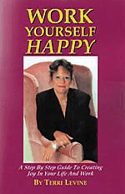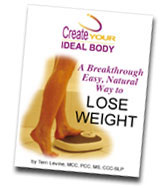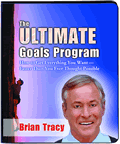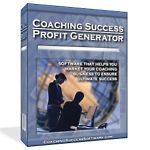|
|
|
|
|
Change
|
|
|
|
Articles on
change |
Management of Change
Quotations about
change
"The entrepreneur always searches for change, responds to
it, and exploits it as an opportunity."
- Peter F. Drucker
"Change is the
law of life and those who look only to the past or present are
certain to miss the future."
~ John F. Kennedy
"There
is a
certain
relief
in
change,
even
though
it
be
from
bad
to
worse!
As I
have
often
found
in
traveling
in a
stagecoach,
that
it
is
often
a
comfort
to
change
one's
position,
and
be
bruised
in a
new
place."
-
Washington
Irving
"Everything changes, nothing remains without change." -- Buddha
"
Few will have the greatness to bend history itself, but each of us
can work to change a small portion of events, and in the total of
all those acts will be written the history of this generation."
- Robert F. Kennedy
"Be the change you want to see in the world."
--
Mahatma Gandhi
"He who rejects change is the architect of
decay. The only human institution which rejects
progress is the cemetery."
- Harold Wilson
"When you're finished changing, you're
finished."
-- Benjamin Franklin
|
|
Usability: Bringing User-centred design inside the
organisation
Trying to get the spirit of usability and user-centered
design (UCD) established internally can be a difficult
and isolating experience, even for the most determined
user champion.
Introducing change of any kind in organisations is
difficult at the best of times, doubly so when you have
to break through the concrete walls of 'process'
and 'methodology'. The emotional journey of
trying to introduce usability is no different to that of
a revolutionary, desperately trying to change the status
quo through various guerrilla tactics.
This article offers practical advice of what a user
champion can do to introduce and embed usability and
user-centered design within a company.
Surviving, thriving and driving organisational change.
When implementing
change, managers often overlook the most important
factor - people!
Design and plan your
change management
strategy to recognise
and support the
transition phase. Do
this and you will reduce
the impact of the
inevitable drop in
productivity. More
importantly you will
gain the on-going
commitment of your
people.
The process of human change begins within us. We all
have tremendous potential. We all desire good results
from our efforts. Most of us are willing to work hard
and to pay the price that success and happiness demand.
 hange
is nothing new to leaders, or their constituents. We understand
by now that organizations cannot be just endlessly "managed,"
replicating yesterday's practices to achieve success. Business
conditions change and yesterday's assumptions and practices no
longer work. There must be innovation, and innovation means
change. hange
is nothing new to leaders, or their constituents. We understand
by now that organizations cannot be just endlessly "managed,"
replicating yesterday's practices to achieve success. Business
conditions change and yesterday's assumptions and practices no
longer work. There must be innovation, and innovation means
change.
Elements of Change
The key to achieving more than you currently are, no matter
which area of your life or work you are focusing in on now, is
change. The old saying rings true: If you always do what you
have always done, you will always get what you’ve already got.
If you keep eating and exercising the way you currently are, you
will weigh the same a year from now. If you continue to sell to
the same people on the same schedule, you will make the same
amount of money next year. In order to move forward, we must
change.
Test Your Assumptions and
Inferences
In the O. Henry short story “The
Gift of the Magi,” Delia and Jim Young are a young married
couple with very little money. On the day before Christmas,
Delia cuts her long beautiful hair and sells it for making a
wig, so that she can buy Jim a platinum chain for his prized
pocket watch. Meanwhile, Jim sells his pocket watch to buy Delia
a beautiful set of combs for her flowing, knee-length hair.
The story has intrigued me since I first read it as a teenager.
It’s about love and selflessness. It’s also about assumptions.
Delia and Jim each take for granted that the other will keep his
or her prized possession. It seems unfair that two people who
act so selflessly toward each other should have to suffer from
the assumptions they made about each other.
But that’s the thing.
Assumptions trip us up even when
we’re acting in the best of faith.
Lewin’s
Change Management Model
Understanding the Three Stages of Change
Change is
a common thread that runs through all businesses regardless of size, industry
and age. Our world is changing fast and, as such, organizations must change
quickly too. Organizations that handle change well thrive, whilst those that do
not may struggle to survive.
The concept of “change management” is a familiar one in most businesses today.
But, how businesses manage change (and how successful they are at it) varies
enormously depending on the nature of the business, the change and the people
involved. And a key part of this depends on how far people within it understand
the change process.
One of the cornerstone models for understanding organizational change was
developed by Kurt Lewin back in the 1950s, and still holds true today. His model
is known as Unfreeze – Change – Refreeze, refers to the three-stage process of
change he describes. Lewin, a physicist as well as social scientist, explained
organizational change using the analogy of changing the shape of a block of ice
Change Equals Stress: Adjusting to
your New Job
Preparing
physically, mentally, emotionally
and spiritually for new job can
limit the stress that is associated
with the change.
Change, even positive, exciting,
beneficial,
seizing-a-great-opportunity change
creates and environment of stress.
And, if there were
storm clouds brewing,
alligator-filled swamps boiling,
backstabbing cutthroats plotting, or
don't get it bosses at the old site;
the "nervousness" might be stronger
than if the last job experience had
been happy.
Making Change
Profitable ...
More on workplace success
The
Dummies Guide to Change, Diffusion and the Tipping Point
Understanding how to initiate
change is becoming a central issue for our time.
Fortunately nature has given us a model that has
a much better chance of working than all the
change book's ideas so far.
On Change
To bury the grape tendril in
such a way that it shoots out
new growth I recognize easily as
a metaphor for the way life must
change from time to time if we
are to go forward in our
thinking.
An Incomplete Manifesto
for Growth
from the
Bruce Mau Design
blog
Written in 1998, the Incomplete Manifesto is an
articulation of statements that exemplify Bruce Mau's beliefs,
motivations and strategies. It also articulates how the BMD studio
works. Article continues
|
|
Elements of Change
The key to achieving more than you currently
are, no matter which area of your life or work
you are focusing in on now, is change. The old
saying rings true: If you always do what you
have always done, you will always get what
you’ve already got. If you keep eating and
exercising the way you currently are, you will
weigh the same a year from now. If you continue
to sell to the same people on the same schedule,
you will make the same amount of money next
year. In order to move forward, we must change.
Jim Rohn
Any day we
wish; we can discipline
ourselves to change it all. Any
day we wish; we can open the
book that will open our mind to
new knowledge. Any day we wish;
we can start a new activity. Any
day we wish; we can start the
process of life change. We can
do it immediately, or next week,
or next month, or next year.
We can also do nothing. We can
pretend rather than perform. And
if the idea of having to change
ourselves makes us
uncomfortable, we can remain as
we are. We can choose rest over
labor, entertainment over
education, delusion over truth,
and doubt over confidence. The
choices are ours to make. But
while we curse the effect, we
continue to nourish the cause.
As Shakespeare uniquely
observed, "The fault is not in
the stars, but in ourselves." We
created our circumstances by our
past choices. We have both the
ability and the responsibility
to make better choices beginning
today. Those who are in search
of the good life do not need
more answers or more time to
think things over to reach
better conclusions. They need
the truth. They need the whole
truth. And they need nothing but
the truth.
We cannot allow our errors in
judgment, repeated every day, to
lead us down the wrong path. We
must keep coming back to those
basics that make the biggest
difference in how our life works
out. And then we must make the
very choices that will bring
life, happiness and joy into our
daily lives.
And if I may be so bold to offer
my last piece of advice for
someone seeking and needing to
make changes in their life - If
you don't like how things are,
change it! You're not a tree.
You have the ability to totally
transform every area in your
life - and it all begins with
your very own power of choice.
To Your Success,
Jim Rohn
This
article is excerpted from Jim
Rohn's best-selling book, The
Five Major Pieces to the Life
Puzzle. The Five Major Pieces to
the Life Puzzle is part of this
week's special offer The Jim
Rohn Book Package. To learn more
or to order go to
http://books.jimrohn.com or
call 800-929-0434.
Change Begins
with Choice by
|
|
|
Leading
in Times of Transition
12 Leader Competencies: What It Takes In Times
of Transition
For many leaders, managing the business and
addressing the needs of workers are at odds.
They ask, "How can I make the tough decisions if
I have to focus on the emotions and concerns of
my employees?" The answer isn't about choosing
either the people or the business, according to
CCL's Kerry Bunker. Instead, the answer lies in
being authentic and building trust.
Article continues
More on Leadership
|
You can check out our latest Braindumps.com exams written by our Actualtests.com teams to help you pass Testking.You can also purchase JUNIPER Our 650-082 is simply excellent in quality.
|
|







